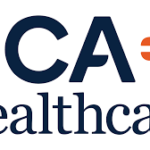 In a recent continuing education class, a student volunteered that nurses in the hospital-based home health agency for which she worked routinely upcoded home care visits. This was necessary, she explained, to compensate for the low level of reimbursement for the correct code. While she recognized that it probably wasnt proper, she was unaware that she was describing criminal conduct that could expose the nurses and their employer to severe penalties. The students comment illustrates the importance of targeted and continuing compliance education for all employees in healthcare organizations.
In a recent continuing education class, a student volunteered that nurses in the hospital-based home health agency for which she worked routinely upcoded home care visits. This was necessary, she explained, to compensate for the low level of reimbursement for the correct code. While she recognized that it probably wasnt proper, she was unaware that she was describing criminal conduct that could expose the nurses and their employer to severe penalties. The students comment illustrates the importance of targeted and continuing compliance education for all employees in healthcare organizations.
There are seven elements of an effective compliance program including the implementation of written policies, procedures and standards of conduct to achieve compliance. Of the seven elements, employee education is among the most important and challenging elements. An effective employee compliance education program incorporates standardized training for all employees and targeted training of groups for whom noncompliance may pose a greater risk to the organization. But no program, regardless of its components, is effective when the employees dont incorporate the compliance methods into their daily practices. Sporadic and subjective efforts at compliance lead to the situations described above and expose healthcare organizations to federal and state sanctions.
Designing a “second wave” of compliance education and training will not only reinforce your organizations commitment to compliance but also empower your employees to support the organizations commitment to ethical practices.
1. Develop Relevant Training Modules
Employees should be educated regarding compliance with Medicare participation requirements relevant to their respective duties and responsibilities and the employees duty to report misconduct. Get managers and senior executives involved in identifying issues of concern and develop programs to address those issues. Engaged employees will report potential problems before they become avenues of liability.
2. Make Compliance Training a Consistent Practice
Annually distribute principles of conduct, patient care guidelines, standards for accurate coding and billing. Implement a variety of teaching methods to keep compliance material engaging, including interactive training sessions, bilingual training, and presentations by guest speakers, such as auditors or billing experts. Compliance training should be an ongoing endeavor and when the education is new and relevant, employee awareness will increase.
3. Balance the Message
Compliance training, as per OIG recommendation, should be a condition of continued employment, but employee compliance education should be presented in a positive and constructive manner; not with a punitive quality. Employees wont be enrolled by a fear-based program. Training that makes employees aware of the pitfalls of program violations can get them invested in compliance.
4. Survey and Edit
An effective employee education program is a constantly evolving program. Survey employees to gauge their level of compliance understanding prior to and after all training sessions. Invite employees to subsequently evaluate the programs and use their suggestions to sharpen the programs focus and target problem areas.
Maintaining corporate compliance program integrity is the goal of any health care organization. An effective compliance program needs educated employees invested in maintaining compliance standards. Such a program calls for regular retraining at all levels of employment. An ongoing education program that makes sense to employees and engages them in the hospitals compliance reinforces the organizations commitment to delivering ethical patient care.
Post Views: 658
 In a recent continuing education class, a student volunteered that nurses in the hospital-based home health agency for which she worked routinely upcoded home care visits. This was necessary, she explained, to compensate for the low level of reimbursement for the correct code. While she recognized that it probably wasnt proper, she was unaware that she was describing criminal conduct that could expose the nurses and their employer to severe penalties. The students comment illustrates the importance of targeted and continuing compliance education for all employees in healthcare organizations.
In a recent continuing education class, a student volunteered that nurses in the hospital-based home health agency for which she worked routinely upcoded home care visits. This was necessary, she explained, to compensate for the low level of reimbursement for the correct code. While she recognized that it probably wasnt proper, she was unaware that she was describing criminal conduct that could expose the nurses and their employer to severe penalties. The students comment illustrates the importance of targeted and continuing compliance education for all employees in healthcare organizations. 

























